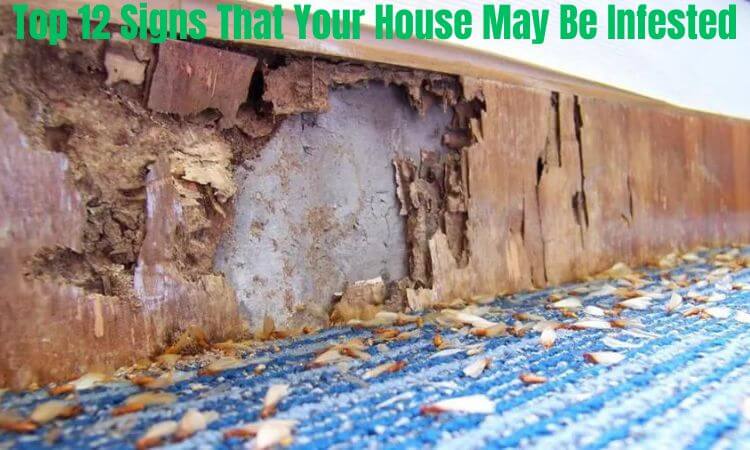Top 12 Signs That Your House May Be Infested
Discovering that your house may be infested with pests can be a distressing realization for any homeowner. Whether it’s insects, rodents, or other unwelcome visitors, pest infestations can pose health risks, cause structural damage, and disrupt daily life. Recognizing the signs of a potential infestation early on is crucial for taking prompt action and mitigating the problem. In this comprehensive guide, we’ll explore the top 12 signs that your house may be infested, empowering you to address the issue effectively and regain control of your home environment.
1. Visible Pest Sightings:
The most obvious sign of a pest infestation is the presence of pests themselves. Whether it’s cockroaches scurrying across the kitchen floor, ants trailing along countertops, or rodents darting into hiding spots, seeing pests in your home is a clear indicator that you may have an infestation.
2. Droppings and Urine Trails:
Pests often leave behind droppings and urine trails as they move throughout your home. These droppings can vary in size, shape, and color depending on the type of pest. For example, rodent droppings are typically small and pellet-shaped, while cockroach droppings resemble tiny black specks.
MUST READ: Top 12 Tips to Become a Healthy and Fit Person
3. Gnaw Marks and Damage:
Rodents like mice and rats have a gnawing habit and may leave behind chew marks on furniture, walls, baseboards, and electrical wiring. Additionally, termites can cause structural damage to the wood components of your home, including beams, joists, and window frames. Keep an eye out for signs of gnawing and structural deterioration.
4. Strange Odors:
Unpleasant odors emanating from certain areas of your home can indicate the presence of pests or their nesting sites. For example, a musty odor in the basement or attic could be a sign of mold growth, while a foul smell near kitchen appliances or garbage bins may signal a cockroach infestation.
5. Scratching Noises:
If you hear scratching or rustling noises coming from within walls, ceilings, or floors, it could indicate the presence of rodents or other pests. Rodents are nocturnal creatures and are most active at night, so you’re more likely to hear noises during evening hours.
6. Nesting Materials:
Pests often create nests or sheltered areas where they can breed and reproduce. Look for signs of nesting materials such as shredded paper, fabric fibers, insulation, or dried plant matter in hidden corners, attics, basements, and crawl spaces.
7. Sudden Plant Damage:
If you notice sudden damage to indoor or outdoor plants, it could be attributed to pests feeding on leaves, stems, or roots. Common plant pests include aphids, mealybugs, spider mites, and scale insects. Check for signs of chewed foliage, yellowing leaves, or stunted growth.
8. Bite Marks on Fabrics:
Certain pests, such as bed bugs and fleas, feed on human blood and may leave behind bite marks on exposed skin during sleep. Inspect bedding, mattresses, upholstered furniture, and pet bedding for signs of blood spots, fecal stains, or shed insect skins.
9. Visible Eggs or Egg Casings:
Some pests lay eggs in hidden crevices or protected areas within your home. Keep an eye out for egg sacs, egg casings, or clusters of tiny eggs, which may indicate the presence of pests like spiders, cockroaches, or bed bugs.
10. Unexplained Allergic Reactions:
Allergic reactions such as skin rashes, respiratory issues, or asthma exacerbations could be triggered by exposure to pest allergens, droppings, or saliva. If you or your family members experience unexplained allergic symptoms, consider the possibility of a pest infestation as a potential cause.
11. Tunnels or Runways:
Certain pests, such as termites and ants, create tunnels or runways as they travel through soil, wood, or other materials. Look for signs of tunneling in wooden structures, soil, or insulation, especially in areas prone to moisture or humidity.
12. Pest Traces in Unusual Places:
Pests can sometimes venture into unexpected areas of your home in search of food, water, or shelter. Check for signs of pest activity in less frequented areas such as attics, crawl spaces, storage rooms, and utility closets.
Conclusion:
Being vigilant and proactive in identifying signs of a potential pest infestation is essential for safeguarding your home and family’s health and well-being. If you notice any of the aforementioned signs or suspect that your house may be infested, it’s important to take prompt action by contacting a licensed pest control professional. With their expertise and specialized treatments, pest professionals can effectively address the infestation and implement preventive measures to keep your home pest-free in the long run. Remember that early detection and intervention are key to minimizing the impact of pest infestations and restoring peace of mind within your living space.
